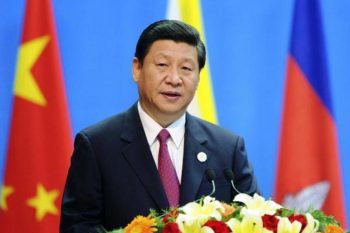
 November 2014 • Tribune 48 •
November 2014 • Tribune 48 •
The upcoming Asia-Pacific Economic Cooperation (APEC) meeting this month could be exceptionally significant. China might use it as an opportunity to discreetly lobby members such as Australia, Indonesia and South Korea into joining its brand-new Asian Infrastructure Investment Bank. The bank’s rules – or lack thereof – oppose Washington’s liberal ideas. China’s efforts could be a sign that Beijing is playing less and less under the existing rules, and that it manages to impose its own. Yet studies still tend to focus on how to ‘manage’ China’s rise, implicitly positing a sense of mastery over the state’s destiny. Much less attention has been paid to how Chinese leaders and thinkers see China’s ascent: their thought form a Chinese alternative to Western models, but it has largely eluded academic scrutiny. Yet this Chinese alternative raises a critically important question: whether China intends to play by the rules of international governance – or to reshape the world order.
China is changing at such a pace that in Shanghai, two-week old maps are out of date. The nature and future of the Chinese juggernaut is under increasingly intense scrutiny. No one knows where China is headed, except that it might become the world’s largest economy in a decade’s time. China’s ascent is changing the world, and analysts wonder whether China will play by the rules of international governance or if it will reshape the global order. This is not necessarily an either/or choice. Both strategies coexist. But which one dominates the other?
We might have a hint of answer very soon. The Asia-Pacific Economic Cooperation (APEC) meeting begins on November 7th. Though fairly powerless, the APEC is significant because its creation was an American initiative. Its unacknowledged goal, among others, was to prevent powerful Asian countries from deviating too much from Washington’s free trade rules. In other words, its unavowed aim was to make Asian countries integrate into the global system; to prevent these states from trying to change the global order. This is where China’s young Asian Infrastructure Investment Bank comes into play. The Bank is a rival to similar Western institutions such as the IMF and World Bank. It challenges Washington. Will China use the APEC summit as an opportunity to convince Asian states to join its bank, despite American opposition? It would be quite ironic to see this happening within the APEC’s liberal framework, which was precisely crafted by Washington to promote a globalization “made in the USA”.
China’s decision-making process has attracted much attention from researchers, even though it is largely undecipherable. More oft than not, China’s political system is presented as the country’s Achilles’ heel. Yet, predictions that the accelerating pace of change in China would undermine the state’s control, or even end in Soviet-style implosion, proved to be wrong. Unlike its Soviet counterpart, the Chinese Communist Party is actually the source of most of the change in the state. It constantly adapts itself to new challenges, thanks to a myriad of minor, crucial, usually efficient reforms. Innovation is a necessity. Professor Zhang Weiwei describes present-day China as “the world’s largest laboratory for economic, social and political experimentation.” Joshua Cooper Ramo pointed out that “China’s problems are simply too big for old solutions, too tremendous for anything but an army of great ideas and successful implementation”. These ideas might ripple around the world; this army of great ideas is marching. Will it conquer or falter?
Beijing faces daunting challenges, from environmental deterioration to inequality and corruption. Yet all nations examine China’s rise. “China’s robust economic performance should be a source of inspiration for other developing countries”, declared Supachai Panitchpakdi when he was at the head of the WTO. Deng Xiaoping’s approach inspired Vietnam’s development mantra: “Stability, development, reform”. Beijing’s model is spreading by the sheer force of China’s example. But does China actively project its model abroad? China’s integration into the international system is not a trick, a shadow on the wall. It is a fact. So is its initiative to develop cooperation with Western countries. But there is a flip side to the coin. As Chinese planners have written in People’s Daily, “this is a course of mutual recognition. The process of our contact with the West is a process of trying to let them understand China, as well as a process of influencing them to some extent.” To what extent precisely is the crux of the problem.
This paper explores the strategic implications of China’s rise. It first presents the process of China’s integration into the international system. It then explores a fundamental shift in Chinese foreign policy thought: the acknowledgment of China’s Great-power status. This causes a major change in Chinese rhetoric and behavior. This paper further argues the inevitability of international resistance to China’s rise, especially in East Asia. It shows that, to varying extents, China is arousing the world’s enmity. It explores the duality of the Chinese reaction to this phenomenon. It argues that Chinese leaders should consider pursuing military and diplomatic restraint. It explores why Chinese policies – from economic development to territorial integrity and national identity – persist, and at times succeed, in spite of mounting resistance. It finally presents the Chinese alternative to Western models, the ideas of the persuasive thinkers who are forging China’s indeterminate future – and could ultimately change the world.
